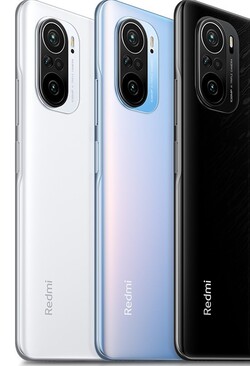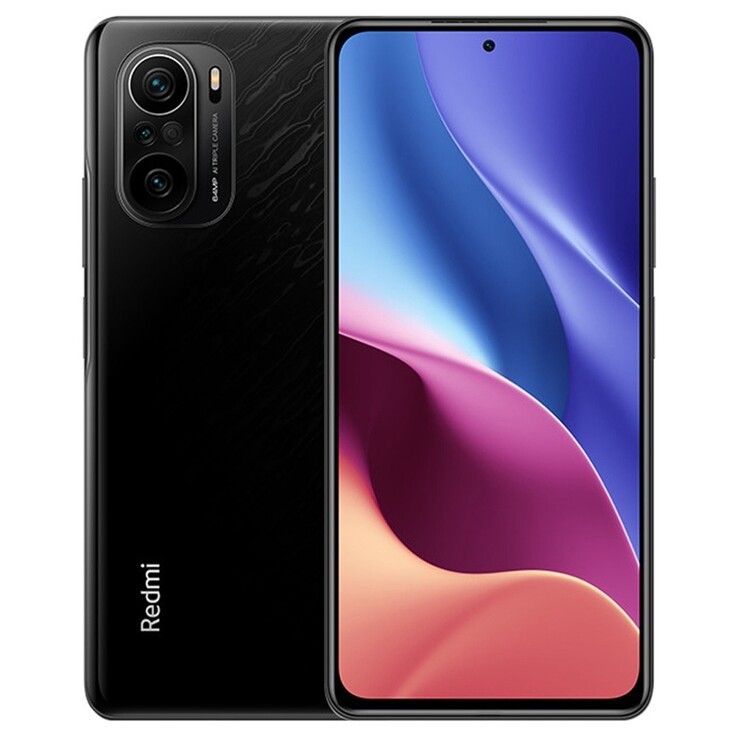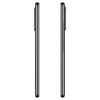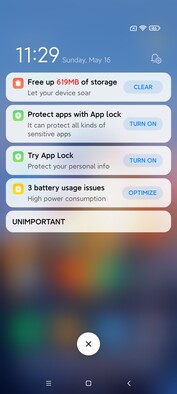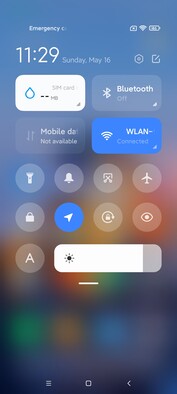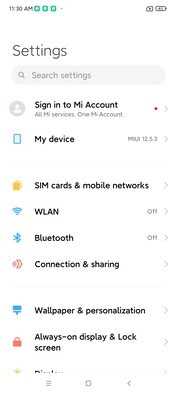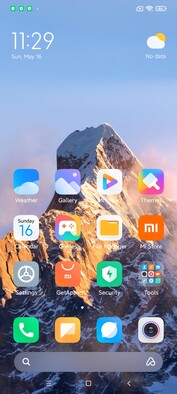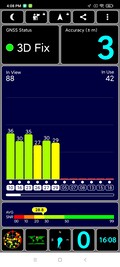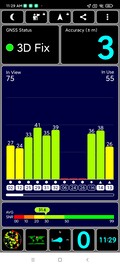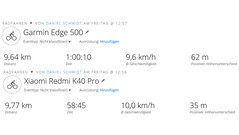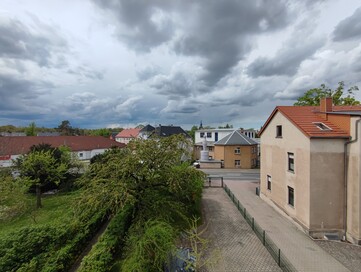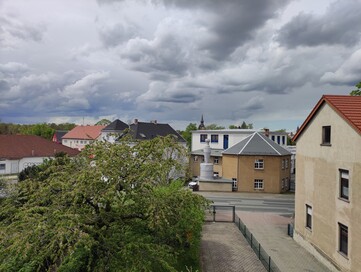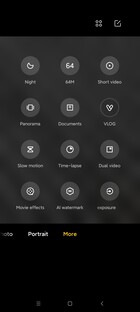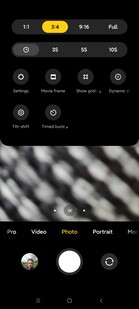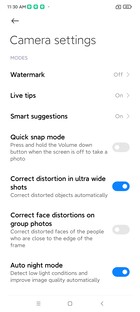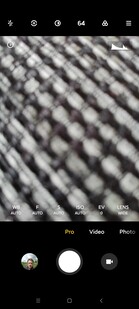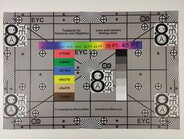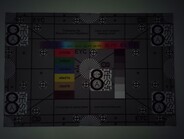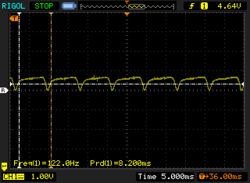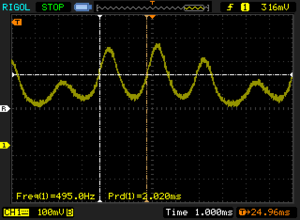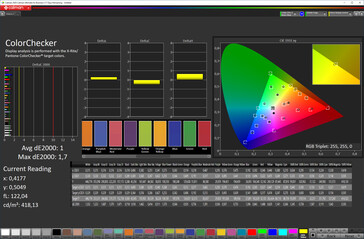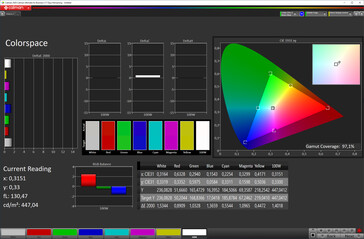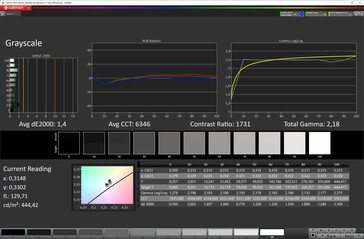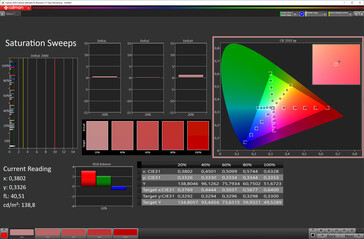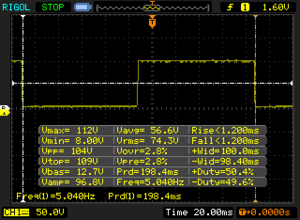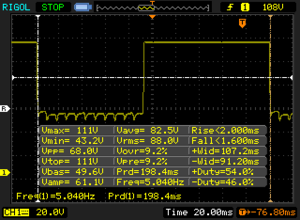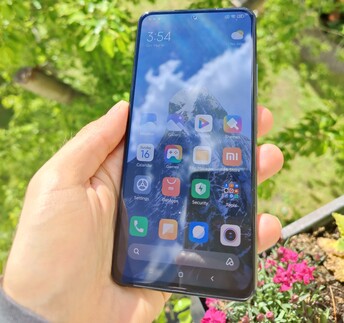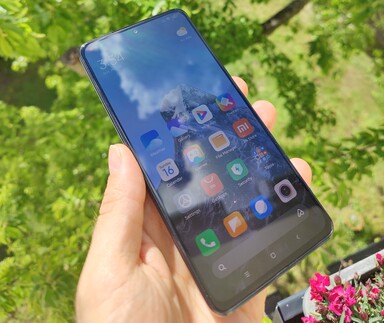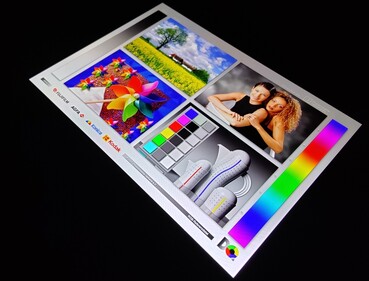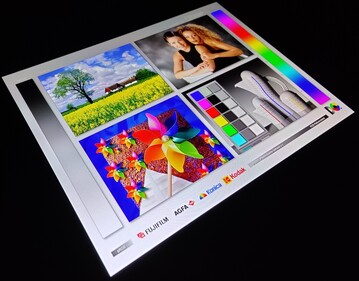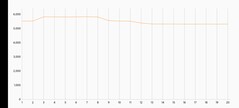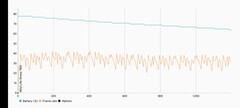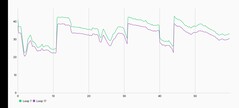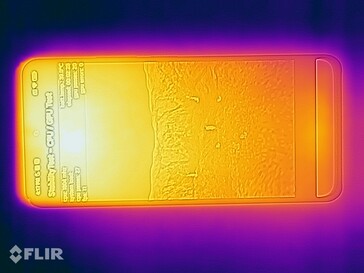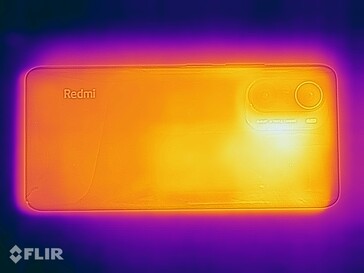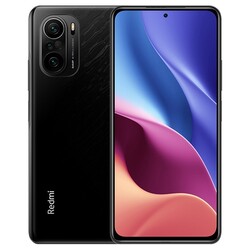Xiaomi Redmi K40 Pro smartphone review - Flagship performance at a mid-range price
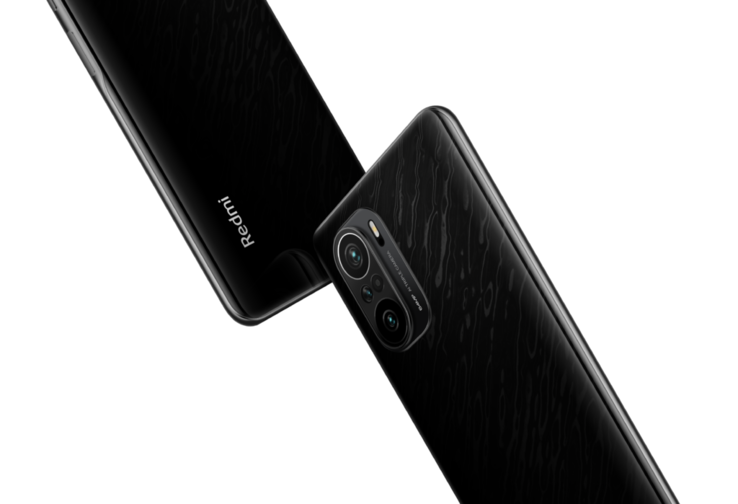
Like the Redmi-K30 series the Redmi K40 Pro is only designed for the Chinese market, but Xiaomi had already released the predecessor Redmi K30 Pro under a different name in Europe as the Poco F2 Pro. It is not yet known whether the Redmi K40 Pro will also be available as a Poco phone this year. In view of the technical features and the expected price (Poco F2 Pro MSRP: 500 Euros/~$609), a Poco F3 Pro would be an interesting alternative to the Xiaomi Mi 11.
The import prices for the K40 Pro currently start at about 430 Euros (~$524, among others at our lender Trading Shenzhen). Buyers of the Redmi Phone get a Samsung E4 AMOLED display with a refresh rate of 120 Hz, dual speakers, and a Snapdragon 888 from Qualcomm. Besides our 8 GB version with 128 GB of internal UFS 3.1 storage, the K40 Pro is also available with 256 GB of internal storage and a variant with only 6 GB of RAM.
Possible competitors in comparison
Rating | Date | Model | Weight | Drive | Size | Resolution | Price |
|---|---|---|---|---|---|---|---|
| 86.9 % v7 (old) | 05 / 2021 | Xiaomi Redmi K40 Pro SD 888 5G, Adreno 660 | 196 g | 128 GB UFS 3.1 Flash | 6.67" | 2400x1080 | |
| 83 % v7 (old) | 04 / 2021 | Samsung Galaxy A52 5G SD 750G 5G, Adreno 619 | 189 g | 128 GB UFS 2.1 Flash | 6.50" | 2400x1080 | |
| 80.6 % v7 (old) | 05 / 2021 | Nokia X20 SD 480, Adreno 619 | 220 g | 128 GB UFS 2.1 Flash | 6.67" | 2400x1080 | |
| 85.9 % v7 (old) | 05 / 2021 | Xiaomi Mi 11 Lite 5G SD 780G 5G, Adreno 642 | 159 g | 128 GB UFS 2.2 Flash | 6.55" | 2400x1080 | |
| 85.4 % v7 (old) | 05 / 2021 | Motorola Moto G100 SD 870, Adreno 650 | 207 g | 128 GB UFS 3.1 Flash | 6.70" | 2520x1080 |
Case - Redmi K40 Pro with Punch-Hole
Similar to the Mi 11 Xiaomi packs the hardware components of the K40 Pro into a comparatively thin and quite light case with 196 grams (~6.9 oz), despite the decent sized 4,520 mAh battery. Although the Redmi Phone with its large 6.67-inch screen falls into the phablet category, the K40 Pro feels quite comfortable in the hand due to the rounded glass back.
The build quality and the pressure points of the built-in buttons are excellent. The edges around the display and the bezel of the front camera in the punch-hole design are also small. The size ratio between the display and the front of the device is a good 86%. Like the Redmi-K30 generation, the K40 Pro has an official IP certification, but only according to IP53. The water-repellent coating protects the Redmi phone from rain and dust from the inside and outside.
Features - Xiaomi phone with IR blaster
The K40 Pro's features include a fingerprint sensor in the power button and an IR blaster. The powerful 4,520 mAh battery is charged via a USB 2.0 port, which allows USB OTG for quick connection of external media.
The internal UFS storage in our review sample has a capacity of 128 GB, but the user only has 106 GB available in the state of delivery. It is not possible to expand the dual-SIM smartphone's storage.
Software - Redmi K40 Pro with MiUI 12.5
The K40 Pro's operating system is based on Android 11 at the time of testing and has the security patch level of April 2021. The manufacturer puts its own MiUI version 12.5 on top.
The MiUI is a highly customized user interface that has little in common with Vanilla Android. In return, the system software offers numerous customization options besides visual adjustments. Unlike Xiaomi phones with MiUI 12, like the Redmi Note 10 Pro or Mi 11 Lite 5G (at the time of testing), the Redmi K40 Pro has a real always-on function of the display for notifications.
In contrast to the Global MiUI available in Germany, the manufacturer's own software for China does not use Google services like the Play Store ex-works. Instead, Chinese services and Xiaomi's own services are used. Unlike Huawei's smartphones, Google's services do not have to be omitted and can simply be installed later. Besides Chinese and English, however, no other system languages, such as German, can be specified.
Communication and GNSS - Redmi K40 Pro with WiFi 6E
Despite the low price, the Redmi smartphone hardly has to make any compromises in terms of communication. The K40 Pro connects to the mobile Internet via the 5G and LTE standards. The Redmi phone can access 20 LTE bands - bands 20 and 28 are also on board for the German-speaking region. Bluetooth version 5.2 is available for wireless communication, and a chip for near-field communication is also present. A Play Protect certification is available, so payment services like Google Pay should work with the K40 Pro.
The Wi-Fi module also convinces with high transfer rates in our Wi-Fi test thanks to Wi-Fi 6E and MIMO technology, which would theoretically allow maximum speeds of 3.5 GBit/s. The values measured by our WiFi 6 reference router, Netgear Nighthawk AX12, are constant with a good 800 MBit/s, but they are significantly lower since the Redmi phone does not use the 160 MHz band.
| Networking | |
| iperf3 transmit AX12 | |
| Xiaomi Mi 11 Lite 5G | |
| Xiaomi Redmi K40 Pro | |
| Motorola Moto G100 | |
| Samsung Galaxy A52 5G | |
| Nokia X20 | |
| iperf3 receive AX12 | |
| Xiaomi Mi 11 Lite 5G | |
| Xiaomi Redmi K40 Pro | |
| Motorola Moto G100 | |
| Samsung Galaxy A52 5G | |
| Nokia X20 | |
In order to assess the tracking accuracy of our test device in practice, we record a route in parallel with the Garmin Edge 500 GPS bike computer for comparison purposes. There is a difference of about 130 meters (~427 feet) between the GPS module in the K40 Pro and the navigation device at the end of the 10-kilometer (~6.2 mi) test route. The deviations in distance are small, but can be seen in the details of the GPS recording.
Phone features and voice quality - Redmi phone with dual SIM
The voice quality of the K40 Pro is as expected in the Vodafone network. Voices are clearly reproduced and also characterized as clear by our call partner. VoLTE and calls via the domestic WLAN are supported. Video calls via Skype using the installed front-facing camera also worked without problems in the test.
Cameras - Redmi K40 Pro with quad cam
A 20 MP camera with HDR function and fixed focus is hidden in the punch hole on the front. The picture quality of the selfies is good in daylight, but, as with the Xiaomi Mi 11, we have to do without a UHD resolution in the video field.
The K40 Pro's primary camera is a 64 MP sensor from Sony. The IMX686, which records videos in 8k with 30 frames per second and UHD quality with 60 fps, offers good photo quality for the price range in good lighting conditions. The 1/1.72-inch sensor, which is already used in the Redmi K30 offers a nice image sharpness and appealing dynamics in high light. However, there are some drawbacks in terms of color fidelity - especially green tones are too saturated and the white balance is often not right.
The main camera is joined by a macro lens and an ultra-wide-angle cam with only 8 MP. Compared with the camera elite, the K40 Pro lacks sharpness and details in wide-angle shots, but the photo quality is also decent considering the price range.
Image comparison
Choose a scene and navigate within the first image. One click changes the position on touchscreens. One click on the zoomed-in image opens the original in a new window. The first image shows the scaled photograph of the test device.
Wide angleWide angleLow Light5x-ZoomUltra wide angle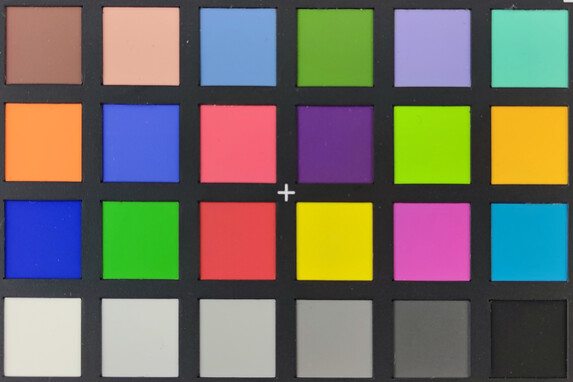
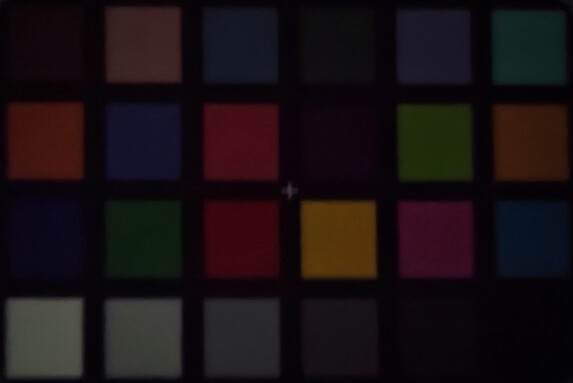
Accessories and warranty - Xiaomi phone with case
The box contains a modular power supply with a rated power of 33 watts, a USB charging cable and a silicone case. TradingShenzhen also includes an EU adapter for the sockets used in this country, but it is not part of the standard delivery. Another service provided by the lender is the flash service on a multi-ROM.
The Xiaomi subsidiary grants a warranty period of 12 months. Our review sample from TradingShenzhen also offers the option of sending the K40 Pro to a German shipping address in case of a warranty claim.
Input devices & operation - Redmi K40 Pro with 360 Hz sampling rate
With a maximum sampling rate of 360 Hz, theRedmi K40 Pro enables responsive control, among others in games, since the AMOLED screen is updated up to 360 times per second here. In combination with the high refresh rate of 120 Hz, the operation of the Redmi phone is very smooth and precise.
The active fingerprint sensor integrated into the power button responds quickly and accurately. Biometric authentication via facial recognition using the front-facing camera also unlocks the K40 Pro reliably, but quite insecurely (2D).
The vibration motor in Xiaomi's smartphone provides a very nice haptic feedback for this price range. Although the vibrations are not quite as precise as in current flagships, including the OnePlus 9 Pro. Nevertheless, typing on the K40 Pro is very pleasant.
Display - Xiaomi smartphone with 120 Hz
The 6.67-inch 120 Hz OLED display with HDR-10 certification has a resolution of 2400 x 1080 pixels and thus a pixel density of almost 400 ppi. The OLED panel's brightness is very high for an upper mid-range phone. On a pure white background with activated ambient light sensor, the screen of the K40 Pro achieves an average of 867 cd/m². With an even distribution of bright and dark areas, the brightness increases visibly and reaches 1167 cd/m² on the APL50, which is more than sufficient for rendering HDR content.
The Redmi K40 Pro supports a "360° light sensor technology" that is supposed to precisely control the accuracy of the automatic brightness adjustment with 8192 brightness levels thanks to the light sensors on the front and back of the casing. To control luminance, the K40 Pro uses PWM, which has a fairly high frequency of 161 to 495 Hz below 66 percent. Above that, we measured a frequency of 120 Hz, but the fluctuations in amplitude are much lower here. An extra DC dimming mode cannot be activated in the Redmi phone.
| |||||||||||||||||||||||||
Brightness Distribution: 97 %
Center on Battery: 864 cd/m²
Contrast: ∞:1 (Black: 0 cd/m²)
ΔE ColorChecker Calman: 1 | ∀{0.5-29.43 Ø4.78}
ΔE Greyscale Calman: 1.4 | ∀{0.09-98 Ø5}
97.1% sRGB (Calman 2D)
Gamma: 2.18
CCT: 6346 K
| Xiaomi Redmi K40 Pro Super AMOLED, 2400x1080, 6.7" | Samsung Galaxy A52 5G Super AMOLED, 2400x1080, 6.5" | Nokia X20 IPS, 2400x1080, 6.7" | Xiaomi Mi 11 Lite 5G AMOLED, 2400x1080, 6.6" | Motorola Moto G100 IPS/LTPS, 2520x1080, 6.7" | |
|---|---|---|---|---|---|
| Screen | -85% | -217% | -102% | -203% | |
| Brightness middle (cd/m²) | 864 | 744 -14% | 646 -25% | 863 0% | 562 -35% |
| Brightness (cd/m²) | 867 | 749 -14% | 617 -29% | 860 -1% | 535 -38% |
| Brightness Distribution (%) | 97 | 98 1% | 89 -8% | 93 -4% | 90 -7% |
| Black Level * (cd/m²) | 0.7 | 0.57 | |||
| Colorchecker dE 2000 * | 1 | 2.2 -120% | 5.71 -471% | 3.2 -220% | 3.99 -299% |
| Colorchecker dE 2000 max. * | 1.7 | 7 -312% | 8.9 -424% | 5.2 -206% | 9.74 -473% |
| Greyscale dE 2000 * | 1.4 | 2.1 -50% | 6.2 -343% | 3.9 -179% | 6.5 -364% |
| Gamma | 2.18 101% | 2.06 107% | 2.122 104% | 2.33 94% | 2.174 101% |
| CCT | 6346 102% | 6516 100% | 8256 79% | 7299 89% | 6882 94% |
| Contrast (:1) | 923 | 986 |
* ... smaller is better
Screen Flickering / PWM (Pulse-Width Modulation)
| Screen flickering / PWM detected | 495 Hz | ≤ 66 % brightness setting | |
The display backlight flickers at 495 Hz (worst case, e.g., utilizing PWM) Flickering detected at a brightness setting of 66 % and below. There should be no flickering or PWM above this brightness setting. The frequency of 495 Hz is relatively high, so most users sensitive to PWM should not notice any flickering. However, there are reports that some users are still sensitive to PWM at 500 Hz and above, so be aware. In comparison: 53 % of all tested devices do not use PWM to dim the display. If PWM was detected, an average of 8111 (minimum: 5 - maximum: 343500) Hz was measured. | |||
The K40 Pro offers an adjustment of individual parameters, such as color temperature, color space or contrast, in addition to 4 color profiles. Due to the OLED technology used, the black levels are first-class and the contrast ratio is very good (infinite in theory). Besides pronounced contrasts, the K40 Pro also offers a high color space coverage of DCI-P3 and sRGB. The 360° light sensor technology allows optionally adjusting the display's color temperature control based on the light conditions in the external environment - similar to Apple's TrueTone technology.
Display Response Times
| ↔ Response Time Black to White | ||
|---|---|---|
| 2.4 ms ... rise ↗ and fall ↘ combined | ↗ 1.2 ms rise | |
| ↘ 1.2 ms fall | ||
| The screen shows very fast response rates in our tests and should be very well suited for fast-paced gaming. In comparison, all tested devices range from 0.1 (minimum) to 240 (maximum) ms. » 11 % of all devices are better. This means that the measured response time is better than the average of all tested devices (20.2 ms). | ||
| ↔ Response Time 50% Grey to 80% Grey | ||
| 3.6 ms ... rise ↗ and fall ↘ combined | ↗ 2 ms rise | |
| ↘ 1.6 ms fall | ||
| The screen shows very fast response rates in our tests and should be very well suited for fast-paced gaming. In comparison, all tested devices range from 0.165 (minimum) to 636 (maximum) ms. » 13 % of all devices are better. This means that the measured response time is better than the average of all tested devices (31.6 ms). | ||
Performance - Redmi K40 Pro with Snapdragon 888
The high-end chipset from Qualcomm installed in the K40 Pro is based on the new Kryo-680 CPU unit. This integrates a fast "Prime Core" based on the ARM Cortex-X1 architecture with up to 2.84 GHz, three fast Cortex-A78 based performance cores (2.42 GHz) as well as four ARM Cortex-A55 cores with a maximum clock rate of 1.8 GHz. Besides the CPU unit, the chipset has a Qualcomm Adreno 660 as the graphics processor.
The system speed of the Redmi Phone is first-rate. The operation is smooth in everyday use, and there are almost no jerks. Thanks to the fast UFS storage and the responsive panel, applications open almost instantaneously.
In combination with 8 GB of LPDDR5 memory, the Snapdragon 888 ensures a high performance. The scores in our benchmark measurements largely correspond to those of the Xiaomi Mi 11 whereby the K40 Pro scores slightly better, albeit with the lower resolution.
| AImark - Score v2.x (sort by value) | |
| Xiaomi Redmi K40 Pro | |
| Samsung Galaxy A52 5G | |
| Nokia X20 | |
| Xiaomi Mi 11 Lite 5G | |
| Xiaomi Mi 11 | |
| Average Qualcomm Snapdragon 888 5G (171404 - 264766, n=15) | |
| Jetstream 2 - 2.0 Total Score | |
| Average of class Smartphone (23.8 - 387, n=153, last 2 years) | |
| Xiaomi Redmi K40 Pro (Chrome90) | |
| Average Qualcomm Snapdragon 888 5G (61.3 - 125.1, n=13) | |
| Motorola Moto G100 (Chrome 90) | |
| Xiaomi Mi 11 Lite 5G (Chrome90) | |
| Samsung Galaxy A52 5G (Chrome 89) | |
| Nokia X20 (Chrome 90) | |
| JetStream 1.1 - Total Score | |
| Average Qualcomm Snapdragon 888 5G (77 - 223, n=19) | |
| Motorola Moto G100 (Chrome 90) | |
| Xiaomi Mi 11 Lite 5G (Chrome90) | |
| Samsung Galaxy A52 5G (Chrome 89) | |
| Nokia X20 (Chrome 90) | |
| Speedometer 2.0 - Result 2.0 | |
| Average of class Smartphone (15.2 - 643, n=126, last 2 years) | |
| Xiaomi Redmi K40 Pro (Chrome90) | |
| Average Qualcomm Snapdragon 888 5G (46.9 - 121, n=12) | |
| Motorola Moto G100 (Chome 90) | |
| Xiaomi Mi 11 Lite 5G (Chrome90) | |
| Samsung Galaxy A52 5G (Chrome 89) | |
| Nokia X20 (Chome 90) | |
| WebXPRT 3 - Overall | |
| Average of class Smartphone (38 - 380, n=34, last 2 years) | |
| Motorola Moto G100 (Chrome 90) | |
| Average Qualcomm Snapdragon 888 5G (103 - 182, n=18) | |
| Xiaomi Mi 11 Lite 5G (Chrome90) | |
| Samsung Galaxy A52 5G (Chrome 89) | |
| Nokia X20 (Chrome 90) | |
| Octane V2 - Total Score | |
| Average of class Smartphone (2228 - 121337, n=201, last 2 years) | |
| Xiaomi Redmi K40 Pro (Chrome90) | |
| Average Qualcomm Snapdragon 888 5G (23491 - 47543, n=20) | |
| Motorola Moto G100 (Chrome 90) | |
| Xiaomi Mi 11 Lite 5G (Chrome90) | |
| Samsung Galaxy A52 5G (Chrome 89) | |
| Nokia X20 (Chrome 90) | |
| Mozilla Kraken 1.1 - Total | |
| Nokia X20 (Chrome 90) | |
| Samsung Galaxy A52 5G (Chrome 89) | |
| Xiaomi Mi 11 Lite 5G (Chrome90) | |
| Motorola Moto G100 (Chrome 90) | |
| Average Qualcomm Snapdragon 888 5G (891 - 1841, n=20) | |
| Xiaomi Redmi K40 Pro (Chrome90) | |
| Average of class Smartphone (257 - 28190, n=156, last 2 years) | |
* ... smaller is better
| Xiaomi Redmi K40 Pro | Samsung Galaxy A52 5G | Nokia X20 | Xiaomi Mi 11 Lite 5G | Motorola Moto G100 | Average 128 GB UFS 3.1 Flash | Average of class Smartphone | |
|---|---|---|---|---|---|---|---|
| AndroBench 3-5 | -31% | -44% | -17% | 6% | 3% | 65% | |
| Sequential Read 256KB (MB/s) | 1456 | 927 -36% | 489.3 -66% | 949 -35% | 1730 19% | 1586 ? 9% | 2216 ? 52% |
| Sequential Write 256KB (MB/s) | 709 | 484.6 -32% | 462.7 -35% | 710 0% | 717 1% | 763 ? 8% | 1837 ? 159% |
| Random Read 4KB (MB/s) | 209.6 | 176.1 -16% | 165.4 -21% | 207.9 -1% | 253.6 21% | 243 ? 16% | 294 ? 40% |
| Random Write 4KB (MB/s) | 306 | 179.2 -41% | 144.6 -53% | 206.9 -32% | 252.9 -17% | 241 ? -21% | 334 ? 9% |
Games - Redmi K40 Pro offers gaming
Like from a Snapdragon 888 smartphone the K40 Pro has enough computing power for smooth playback even in demanding games from the Play Store. PUBG Mobile, as with the Xiaomi Mi 11, is playable in UltraHD without frame drops.
Emissions - Redmi K40 Pro with stereo sound
Temperature
| 3DMark - Wild Life Stress Test Stability | |
| Xiaomi Mi 11 Lite 5G | |
| Samsung Galaxy A52 5G | |
| Nokia X20 | |
| Motorola Moto G100 | |
| Xiaomi Redmi K40 Pro | |
(±) The maximum temperature on the upper side is 40.2 °C / 104 F, compared to the average of 35.2 °C / 95 F, ranging from 21.9 to 247 °C for the class Smartphone.
(±) The bottom heats up to a maximum of 40.3 °C / 105 F, compared to the average of 34 °C / 93 F
(+) In idle usage, the average temperature for the upper side is 27.8 °C / 82 F, compared to the device average of 32.9 °C / 91 F.
Speaker
The two speakers provide a good sound output, which is very good for this price range, thanks to a Dolby Atmos certification and decent maximum volume of 87 dB(A). The sound is characterized by tones from mid and high frequencies. Our measurements show that the audible range is reproduced relatively linearly for a smartphone, even slight basses are perceptible.
A bassier sound output via headphones is enabled either via USB-C or Bluetooth 5.2; there is no 3.5 mm jack.
Xiaomi Redmi K40 Pro audio analysis
(+) | speakers can play relatively loud (87.4 dB)
Bass 100 - 315 Hz
(-) | nearly no bass - on average 26.7% lower than median
(±) | linearity of bass is average (12.3% delta to prev. frequency)
Mids 400 - 2000 Hz
(±) | higher mids - on average 5.7% higher than median
(+) | mids are linear (5.9% delta to prev. frequency)
Highs 2 - 16 kHz
(+) | balanced highs - only 3.9% away from median
(+) | highs are linear (3.7% delta to prev. frequency)
Overall 100 - 16.000 Hz
(±) | linearity of overall sound is average (18% difference to median)
Compared to same class
» 16% of all tested devices in this class were better, 8% similar, 76% worse
» The best had a delta of 11%, average was 35%, worst was 134%
Compared to all devices tested
» 37% of all tested devices were better, 8% similar, 55% worse
» The best had a delta of 4%, average was 24%, worst was 134%
Samsung Galaxy A52 5G audio analysis
(+) | speakers can play relatively loud (89 dB)
Bass 100 - 315 Hz
(-) | nearly no bass - on average 27.3% lower than median
(±) | linearity of bass is average (11.4% delta to prev. frequency)
Mids 400 - 2000 Hz
(±) | reduced mids - on average 6.2% lower than median
(+) | mids are linear (4.4% delta to prev. frequency)
Highs 2 - 16 kHz
(±) | higher highs - on average 5% higher than median
(+) | highs are linear (3.3% delta to prev. frequency)
Overall 100 - 16.000 Hz
(±) | linearity of overall sound is average (19.3% difference to median)
Compared to same class
» 26% of all tested devices in this class were better, 9% similar, 65% worse
» The best had a delta of 11%, average was 35%, worst was 134%
Compared to all devices tested
» 46% of all tested devices were better, 8% similar, 47% worse
» The best had a delta of 4%, average was 24%, worst was 134%
Battery life - Xiaomi cell phone with 4,520 mAhbattery
Energy absorption
The 4,520 mAh capacity battery of the K40 Pro is fully recharged in about 50 minutes via the 33-watt fast charging technology. However, wireless charging is not possible with the Redmi phone.
The power consumption is not very high for a Snapdragon 888 phone.
| Off / Standby | |
| Idle | |
| Load |
|
Key:
min: | |
| Xiaomi Redmi K40 Pro 4520 mAh | Samsung Galaxy A52 5G 4500 mAh | Xiaomi Mi 11 Lite 5G 4250 mAh | Motorola Moto G100 5000 mAh | Average Qualcomm Snapdragon 888 5G | Average of class Smartphone | |
|---|---|---|---|---|---|---|
| Power Consumption | 3% | -4% | -13% | -10% | -11% | |
| Idle Minimum * (Watt) | 0.93 | 0.92 1% | 0.83 11% | 0.9 3% | 1.066 ? -15% | 0.848 ? 9% |
| Idle Average * (Watt) | 1.46 | 1.78 -22% | 1.92 -32% | 1.5 -3% | 1.58 ? -8% | 1.434 ? 2% |
| Idle Maximum * (Watt) | 1.49 | 1.81 -21% | 1.97 -32% | 2.1 -41% | 1.733 ? -16% | 1.618 ? -9% |
| Load Average * (Watt) | 5.17 | 3.86 25% | 3.84 26% | 6.7 -30% | 5.46 ? -6% | 7.01 ? -36% |
| Load Maximum * (Watt) | 9.22 | 6.14 33% | 8.6 7% | 8.5 8% | 9.79 ? -6% | 11.3 ? -23% |
* ... smaller is better
Battery life
The K40 Pro can convince with decent runtimes in our WLAN test with an adjusted display brightness of 150 cd/m² despite 120 Hz. With over 12 hours, it lasts considerably longer than its corporate brother Xiaomi Mi 11.
| Xiaomi Redmi K40 Pro 4520 mAh | Samsung Galaxy A52 5G 4500 mAh | Nokia X20 4470 mAh | Xiaomi Mi 11 Lite 5G 4250 mAh | Motorola Moto G100 5000 mAh | |
|---|---|---|---|---|---|
| Battery runtime | |||||
| WiFi v1.3 (h) | 12.1 | 11.8 -2% | 14.7 21% | 12.2 1% | 17.5 45% |
Pros
Cons
Conclusion about the Redmi K40 Pro
The Redmi K40 Pro is a powerhouse trimmed for performance with a great OLED panel and good stereo speakers. The Xiaomi smartphone offers a total package in the price range of 400 to 500 Euros (~$487 to $609), which is hard to beat. However, interested buyers will have to wait for the possible release of a new smartphone Poco F3. Furthermore, the known Xiaomi weaknesses (USB 2.0, no UHD function in the front camera) are also present in the K40 Pro.
If you prioritize performance and display, you will not find a better smartphone than the K40 Pro for less than 450 Euros.
The familiar Sony camera sensor performs very well in daylight, but does not set new standards in the field of upper mid-range photography. Since Xiaomi did not focus on the camera qualities, the K40 Pro does not have a telephoto lens or OIS. The ultra-wide-angle lens, with its 8 MP, also visibly drops in quality.
Price and availability
The prices for the Redmi K40 Pro (8GB/128GB) start at TradingShenzhen, at around 450 Euros (~$548) at the time of the review.
Xiaomi Redmi K40 Pro
- 08/31/2022 v7 (old)
Marcus Herbrich




